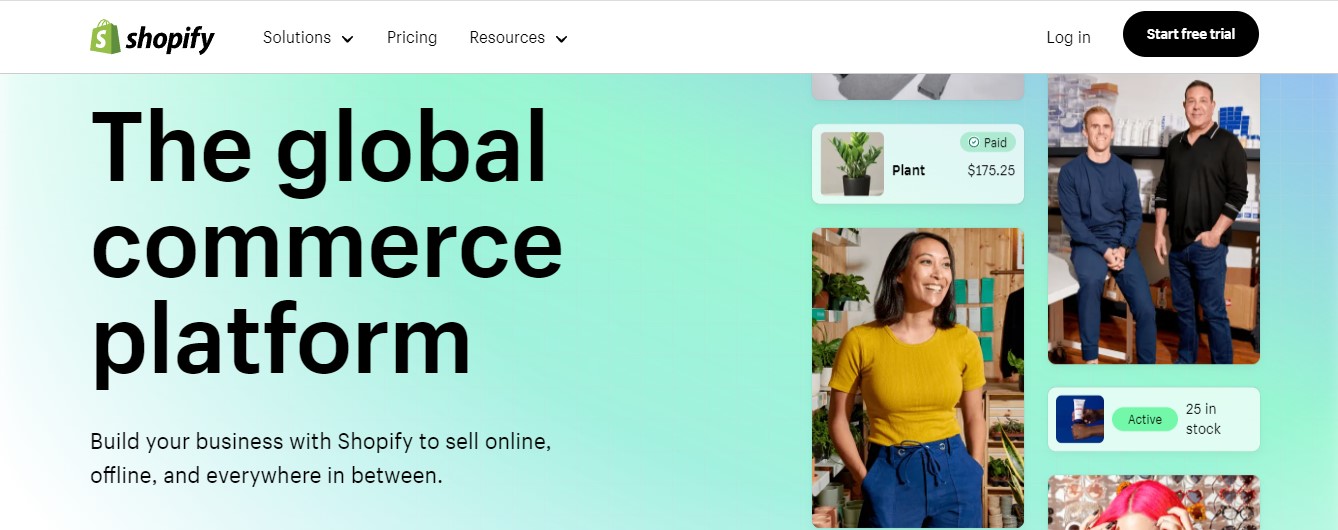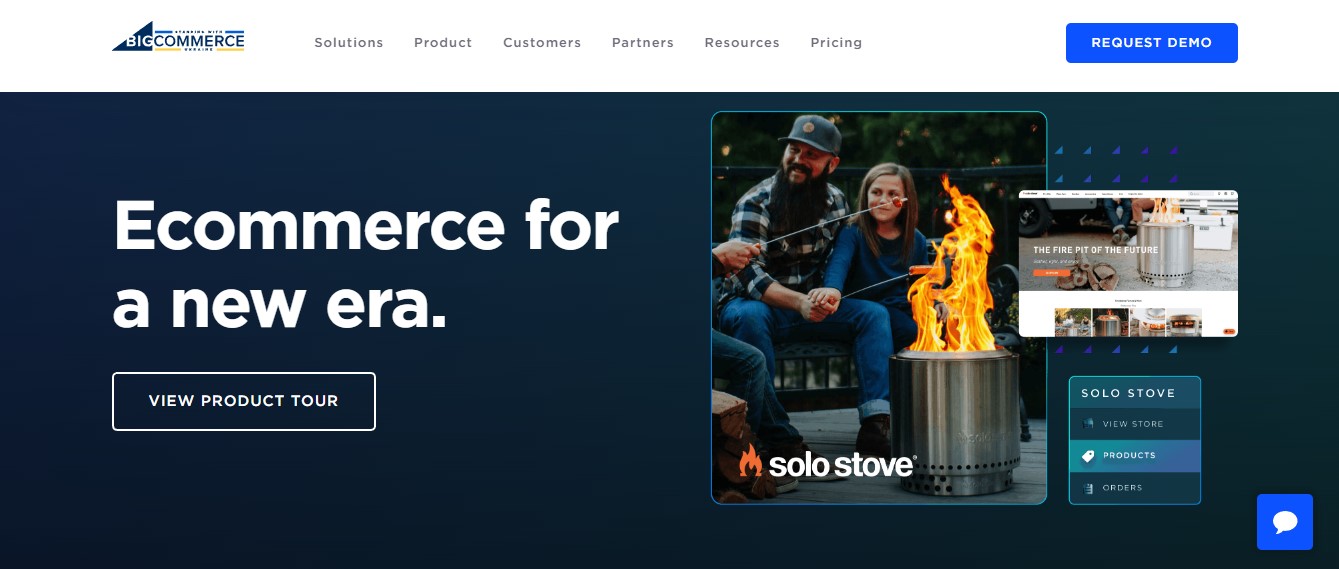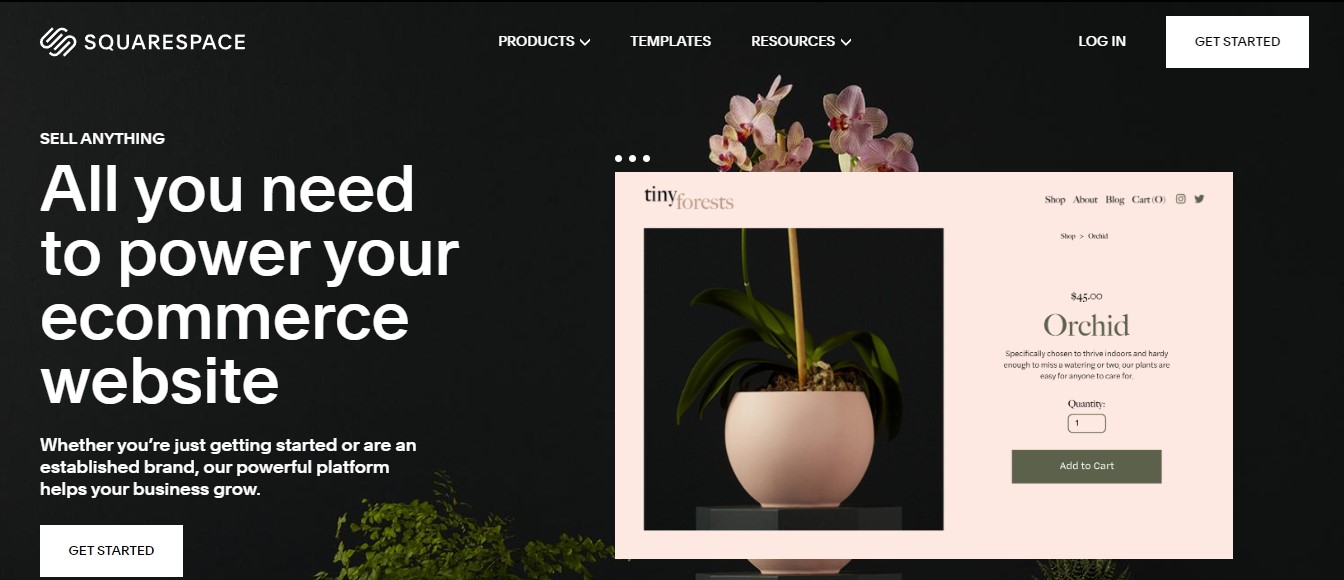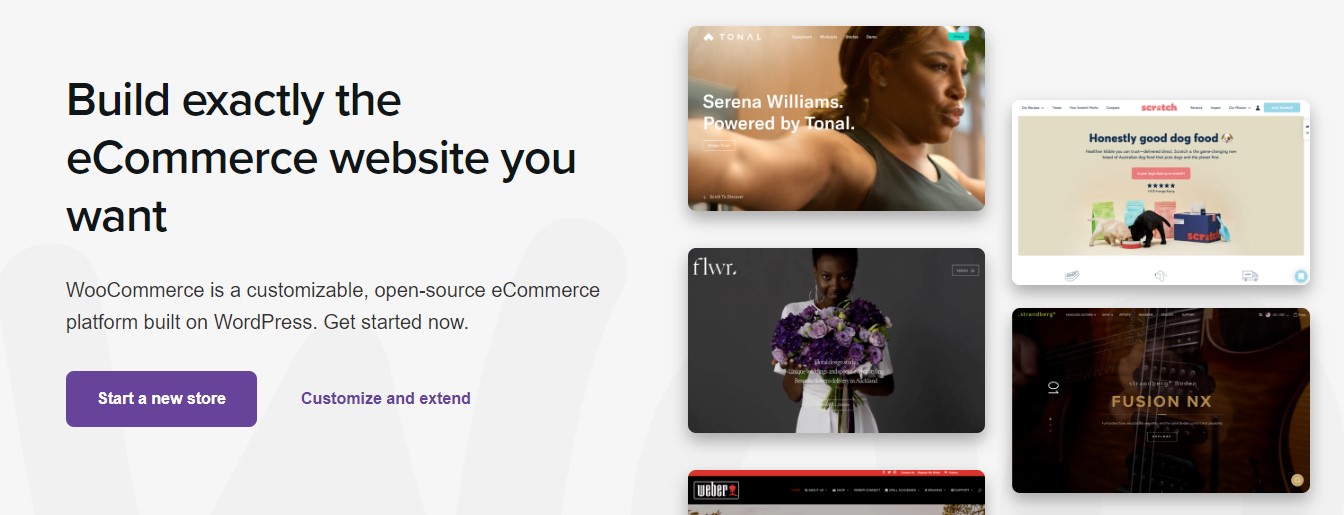How to start an online boutique
Online retail is an enormous industry and still one of the fastest-growing

Online retail is an enormous industry and still one of the fastest-growing. In 2021, e-commerce sales worldwide amounted to $5.2 trillion and is predicted to reach $8.6 trillion by 2026. These figures indicate that there’s a massive opportunity to start a successful online boutique, and this article will show you how to go about it.
What is a boutique?
Many people use the words “boutique” and “store” interchangeably but they aren’t exactly the same thing. Boutiques are specialty shops that operate in a specific niche and sell a limited variety of products. Stores, on the other hand, have much larger inventories and sell many types of products. Boutiques offer a curated and personalized shopping experience that stores tend to lack.
How to start an online boutique
Starting an online boutique has become easier over time. Yet, it’s not something to jump into without detailed planning. Don’t expect to make your first sale overnight, so you’ll need some patience and perseverance. Some niches require a business license to purchase inventory and sell them, so look into the permits that you may need to get from your city, county, or state. Expect to face challenges along the way, especially if this is your first business. But, our guide can help you navigate these challenges.
The steps to follow to start an online boutique include
1. Decide on your niche
The first step to take is to decide on the niche and target audience for your online boutique. This is the process of identifying the products that'll make your online retail outlet stand out from the competition. There are virtually unlimited niches out there, and choosing the most suitable one can be challenging. But, we have tips to help you:
Follow your passion: You’re more likely to excel if you specialize in a niche that you’re passionate about. For example, if you’re a lover of books, you’ll likely do well running an online bookstore. The enthusiasm will help you push through tough times that would normally make a non-passionate person throw in the towel.
Be specific: The more specific your niche is, the more likely that’ll you find a gap in the market to capture. For example, there are many e-commerce shops to go to if you want to buy a t-shirt for your kid. However, there are a few shops that sell Pokémon-themed apparel. The latter is a specific niche that you can focus on better, but avoid having a niche that’s too narrow because it’ll limit your customer base.
Sign up to the TechRadar Pro newsletter to get all the top news, opinion, features and guidance your business needs to succeed!
Provide a solution: People love to buy products that solve one or more of their problems. Offer a product that provides a solution to a known issue and answers a pressing need. This makes your online shop more likely to succeed and remain in business.
You can start by writing down all your product ideas on a piece of paper and then narrow it down to a specific niche after much pondering.
2. Source Suppliers
After choosing your niche, the next step is to look for suppliers that’ll give you the products to sell (unless you plan to manufacture the products yourself). The normal way is to strike a deal with a wholesaler that’ll supply you with goods in bulk which you can sell individually for a markup. Another option is to become a drop shipper that sells another supplier’s products through your website while the supplier takes care of packaging and shipping; you can place a markup on the supplier’s price and keep the profits.
| Pros | Cons |
|---|---|
| You have full control over product packaging and shipping, which helps you build a brand just the way you want. | Wholesale requires overhead and human resources to manage |
| You can assess and verify the quality of items before shipping them out to customers. | Bulk items can be costly to purchase |
| It’s easy to store some types of products in your home or a warehouse, e.g., clothing. | Considerable losses if you can’t find a way to sell your goods. |
| Pros | Cons |
| You don’t need to stress about acquiring products in bulk and storing and shipping them out to buyers. | You can not verify the quality of products before they’re shipped out; a customer who receives a damaged product will likely leave a bad review. |
| You can source items from anywhere around the globe. | You don’t have control over shipping times. It could take up to weeks and months, which displeases the buyer. |
| It gives more flexibility to test different products to see what works. | Lower profit margin because of intense price competition between retailers sourcing products from the same supplier. |
Ensure you vet your suppliers thoroughly before choosing them. Avoid suppliers that have bad reviews and a history of poor service. Ideally, request product samples to assess the quality before committing to a bulk order.
3. Build your brand
There are millions of online sellers like you, so you’ll need to build a unique brand identity to differentiate yourself. Come up with unique values to sell your brand. For instance, millennial buyers increasingly want to buy products that are built sustainably and are even willing to pay a higher price for them. So, you can source products that are manufactured with little to no carbon emissions and market yourself as a sustainable brand. Also, come up with statements of purpose, mission, and vision for your brand.
Your logo and name are the primary things that differentiate you from the competition, so you must put much effort into them. Choose a name that’s short and easy to remember. If you’re having a problem with this, there are many brand name generators you can use online. Then, design a logo that looks professional and legible. You can hire a graphic designer or use a design tool like Canva.
Select a unique color set for your logos and use these colors consistently across your website. This will make it look professional and easier for shoppers to identify.
4. Create a business plan
You should create a business plan that'll lay out the details of your online boutique. This plan is like the blueprint for a construction project. It's important to draft a plan before launching and stick to it along the way instead of trying out random things to see what works.
The business plan should include these details:
- Your business model; How do you plan to earn revenue and profits?
- The estimated costs of starting your online boutique
- Sales projections over a specific period
- Challenges that you expect to face and how you’ll tackle them
- Analysis of your competitors and how you plan to compete with them
- Your marketing strategy
Craft a business plan that you can present to someone confidently even if you may not need to do that. This helps you create something that’s authentic and feasible.
5. Register your online boutique
There are some legal requirements to fulfill before launching an online boutique. It’s not always compulsory but it’s advisable to incorporate your business before starting, as it will make you look more professional in the eyes of customers and suppliers. You can choose one of these legal structures:
| Limited liability company (LLC) | This structure offers limited liability, as in, you won’t be personally responsible for any debts or claims accrued by your business. |
| Partnership | This is when two or more people agree to register a business and share responsibilities for managing the business. The partners are personally liable for any debts accrued by their firm. |
| Sole proprietorship | A one-man show where the owner is personally liable for any debt or legal guarantees against their business. |
Once you’ve chosen a business structure, you can file registration papers in the state you’re operating in and check whether you need a specific license to sell the products that you have chosen. You'll also need to apply for a sales tax permit and a federal tax ID:
Sales tax permit: This is a document that gives you the authorization to collect sales tax from customers and hand them over to the government.
Federal Tax ID: This is a unique nine-digit number assigned to your business. You'll need it to open a business bank account, apply for licenses, hire employees, pay taxes, etc.
6. Choose an e-commerce platform
You’ve found a niche, sourced product suppliers, came up with a brand identity and business plan, and registered your business. Now, it’s time to choose which platform you’ll use to build the online boutique. You have two main choices:
- Use a dedicated e-commerce website builder like Shopify or BigCommerce.
- Build a WordPress site and install an e-commerce plugin such as WooCommerce.
E-commerce builders give you all the tools you need to build an online shop. You don’t need to have coding skills to use one to build your site, although it can get technical sometimes. It’s quick and relatively easy to set up; you just need to pay the recurring subscription fee to keep your site up and running.
WordPress is an open-source platform that powers over 40% of websites. It’s more difficult to use than standalone e-commerce builders but it gives you more control and customizability over your online boutique.
| Pros | Cons |
|---|---|
| There's hands-on help and support available when you're facing difficulties. | They can be expensive, especially for small businesses. |
| You don’t need technical and programming skills to create your online boutique. | Some platforms take fees on every sale . |
| Responsive themes. | Limited customizability. |
| Pros | Cons |
|---|---|
| You have more control and customizability over your website. | More technical and complex to use. |
| WordPress hosting is more affordable than e-commerce builders. | No hands-on support, so you may need to hire someone to help. |
| Plugins give you access to a larger variety of features. | Takes more time to set up and manage. |
Popular e-commerce builders
Popular e-commerce builders include:
1. Shopify

Shopify is the most widely used e-commerce software provider with over 4.5 million live websites according to BuiltWith. This platform makes it very easy to create an online shop. You can simply sign up, select a domain name, and start building your store. Shopify offers a lot of responsive themes, some free and others paid. Once you’re done setting up the store, you can integrate it with a payment gateway to receive money from customers. Then, you can ship goods to customers after payment.
This platform offers three main pricing plans: Basic, Shopify, and Advanced, costing $32 per month, $92 per month, and $399 per month respectively. There's also a special Plus plan for high-volume businesses that cost $2,000+ per month, but most online boutiques won't need this.
2. BigCommerce

BigCommerce is another well-known e-commerce software vendor used by over 145,000 websites according to BuiltWith. It works similarly to Shopify; you can sign up, select a plan, and begin building your online retail outlet. You can choose from many themes and start adding products when you're ready. Every theme is mobile-optimized out of the box, so you don’t have to worry about that. Yet, BigCommerce offers a smaller theme selection and feature set than Shopify.
This platform has three main pricing plans: Standard, Plus, and Pro, which cost $30 per month, $80 per month, and $300 per month respectively. There’s also an Enterprise plan for high-volume retailers which doesn’t have standard pricing. BigCommerce is slightly cheaper than Shopify.
3. Squarespace

Squarespace is best known as a general website builder but it offers a standalone platform for building online shops. You can access responsive templates to make your boutique visually appealing. This platform lets you manage your shipping and fulfillment, taxes, payments, and more with ease. For instance, you can set different shipping options such as a flat rate, weight-based, or calculated in real-time based on various factors. It's also integrated with email marketing and social media tools to help you promote your store.
This platform offers two e-commerce plans; Basic and Advanced, costing $36 per month and $65 per month respectively. The difference is that the latter includes more advanced shipping and discounting tools.
Popular WordPress e-commerce plugins
Popular WordPress e-commerce plugins include
1. WooCommerce

WooCommerce is the most widely used e-commerce plugin for WordPress sites. It's owned and developed by Automattic, the same company behind the WordPress platform. You can install the plugin for free, unlike e-commerce software providers that require you to pay before service. But, you may need to pay for a professional theme and some “extensions” to give your website additional functionalities.
This platform is simple to install and set up. However, it gets technical if you want to customize your online boutique, so you may need to hire external help.
2. BigCommerce For WordPress

BigCommerce is a standalone e-commerce software vendor that we mentioned above. But, it also offers a separate plugin that you can install on a WordPress site and get similar functionalities as the standalone platform. It’s a free plugin like WooCommerce.
After installing this plugin, you’re free to create and customize your online boutique the way you want. The free themes are optimized for speed and mobile displays out of the box, and you can use the WordPress editor to customize your site’s appearance. You can even manage multiple WordPress sites from one dashboard. Yet, this plugin offers limited features compared to WooCommerce.
3. Ecwid

Ecwid is a plugin that integrates seamlessly with WordPress sites. It's compatible with all WordPress themes and makes it easy to set up an online shop and start selling. It's noticeably quick and easy to set up and there's a mobile app that lets you manage your website on the go. This platform works with over 50 payment gateways.
The basic version of Ecwid is free but limits the number of products you can sell. You’ll need to pay if you want more advanced features and you can choose from one of three plans: Venture, Business, and Unlimited, which cost $14 per month, $29 per month, and $83 per month respectively.
7. Create your online boutique
Once you’ve chosen the right platform or plugin to use, it’s time to focus on the most important aspect of building the online boutique you’ve made a lot of plans for. Follow these steps:
Create a domain name
Buy a domain name for your brand, preferably ending with the “.com” suffix. Hosting your online shop on another person’s domain, e.g., “[Store_Name].myshopify.com” doesn’t look professional and can scare away potential customers. Most e-commerce builders and WordPress hosting services also offer domain names.
Add products including photos and descriptions
Add the products that you have sourced from suppliers to your online store. It’s essential to provide high-quality photos of the products because this makes buyers more confident to purchase them. Also, use catchy product descriptions to entice customers.
Create product categories
Imagine entering a physical boutique where products aren’t sorted out according to their similarities– it’ll be confusing to find what you want, and it’s the same way for an online store. Create product categories so that visitors to your online boutique can easily identify what they want to buy. Otherwise, they’ll have to randomly sort through your boutique, which most shoppers don’t have time for.
Work on your checkout page
Make your product checkout page as simple as possible. Ideally, customers should only jump through one or two steps to pay for your product. If not, you’ll see a high rate of cart abandonment.
Set up a payment gateway
There’s no way to receive money from your customers without a payment gateway. Thus, find one that fits your needs and integrate it with your site to collect payments from customers. Popular gateways include Stripe, PayPal, Checkout.com, Adyen, etc.
The primary factor to watch out for when choosing a payment gateway is the transaction fee. Different platforms have different commission structures, so choose one that’s affordable to you. Expect a fee of between 1% and 5% depending on your sales volume; high-volume retailers usually get discounted fees. Some gateways also charge a small flat fee for each transaction, usually between 10 and 50 cents.
Organize your shipping
Decide how you’ll ship products to customers that pay for them and the cost of doing that. You may offer free shipping, a flat rate, or real-time carrier rates calculated based on various factors. Also, create a clear returns policy so that customers can return goods and get a refund if they’re not satisfied with them. This may seem counter-intuitive but it’s important in building your brand reputation– you don’t want a customer leaving bad reviews.
You can choose from one of many shipping carriers to deliver goods to your buyers, e.g., DHL, USPS, UPS, FedEx, etc.
Market Your Online Boutique
No matter how good your products are, no one will patronize you if they don’t hear about them. Hence, you’ll need to market your newly created online boutique, and there are various ways to do that:
Social media ads
You can create a profile on popular social media sites like Instagram and Facebook and run advertisements for your products. The good thing about these sites is that you can run advertisements even with a small budget.
Email marketing
You can build an email list and advertise your products to anyone who signs up on the list and consents to receive marketing emails from you.
Search engine ads
You can run ads on popular search engines like Google and Bing. You can bid for your ad to show up whenever someone searches a keyword related to your products.
Word of mouth
Satisfied customers can spread the word about your brand to their social circles. You can even entice them to refer customers in exchange for a discount or free gift.
Conclusion
Creating an online boutique isn’t hard. The hard part is getting sales and navigating the challenges that come up as you grow the business. We’ve outlined the steps to follow if you want to create an online shop and they’re pretty easy to follow. But, if you get stuck in any step, don’t be afraid to seek external help.
Stefan has always been a lover of tech. He graduated with an MSc in geological engineering but soon discovered he had a knack for writing instead. So he decided to combine his newfound and life-long passions to become a technology writer. As a freelance content writer, Stefan can break down complex technological topics, making them easily digestible for the lay audience.
